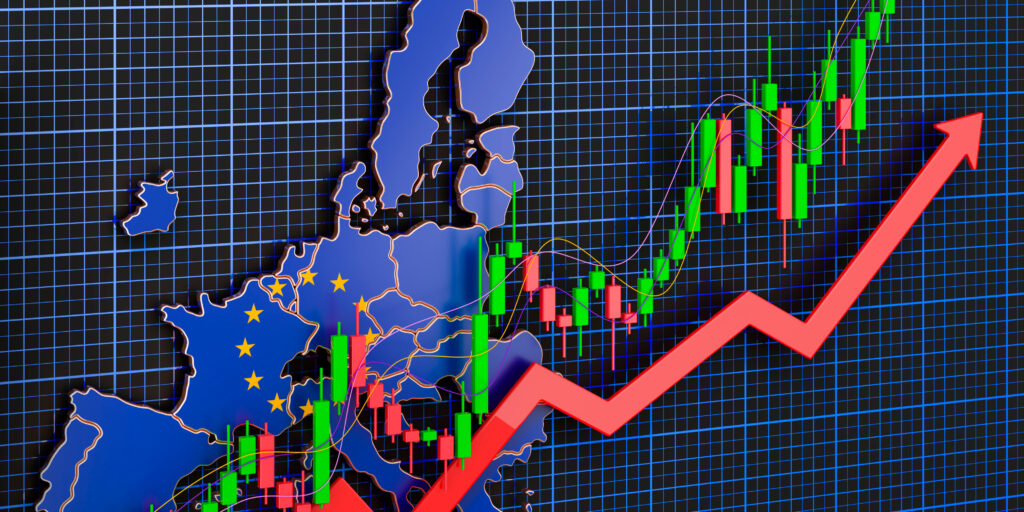Unveiling the 2024 Economic Landscape: A Robust Start Defies Expectations
As we delve into 2024, the United States economy has embarked on a journey that defies the cautious anticipation set by the preceding year, marking a robust start that challenges the consensus. The resilience and momentum carried from 2023 into the new year have nudged investor expectations regarding Federal Reserve interest rate cuts further into the future. This economic vigor, rather than being a harbinger of risk, aligns seamlessly with the Federal Reserve’s strategic objectives, reinforcing the strength of the economy as a foundational asset to the Fed’s plans.
Federal Reserve’s Conservative Growth Outlook
In a detailed forecast released in December, the Federal Reserve painted a modest picture of the economic growth expected in 2024, projecting a real GDP growth rate of 1.4%. This projection notably falls short of the 2.5% growth rate observed last year, setting the stage for a year of growth below the long-term potential envisioned at 1.8%. This conservative outlook mirrors a broader sentiment of caution among Wall Street forecasters, who, despite a slightly more optimistic view from the Atlanta Fed’s GDPNow model predicting a 2.9% growth rate in Q1 2024, predominantly anchor their expectations closer to a 1.8% growth rate.
Rethinking Growth Projections: A Call for Optimism
Neil Dutta from Renaissance Macro raises a compelling argument against the prevailing conservative growth forecasts. With Wall Street’s projections inching towards stronger growth yet remaining guarded, Dutta advocates for a significant reassessment of these expectations. He critiques the Blue Chip Quarterly Consensus Forecast for its overly cautious stance, which does not align with recent survey data and stock market performances indicating a potential uptick in business investment. Furthermore, Dutta underscores the disconnect between the current inflation figures and the overarching narrative, suggesting that underlying inflation is on a deceleration path, potentially guiding the Fed toward a policy recalibration.
Monetary Policy in the Modern Economy: A New Paradigm
The discourse surrounding the Federal Reserve’s anticipated rate cuts in 2024 has evolved, with the market now expecting fewer cuts than initially anticipated. This shift in expectations sheds light on a broader narrative that transcends the direct impact of interest rates on valuations, focusing instead on economic growth as the central theme. Dutta challenges the traditional understanding of monetary policy’s effects, suggesting that the economy may have already absorbed the brunt of past tightening measures. This perspective questions the long-held belief in the delayed and variable impacts of monetary policy, proposing a shorter lag in the modern economic context, which suggests a more immediate adaptation to policy changes.
The Stock Market and Economic Fundamentals: An Intrinsic Link
The debate over the stock market’s reflection of underlying economic health finds resonance in the recent performance trends. Despite the grim recession forecasts dominating the onset of 2023, the economy not only averted a downturn but also exhibited accelerated growth, complemented by a notable rally in the S&P 500. This juxtaposition of market resilience against the backdrop of aggressive Fed rate hikes and significant inflation challenges in 2022 paints a complex picture of the economic and financial market dynamics. The market’s robust performance, juxtaposed with the Fed’s decisive actions and the broader economic indicators, offers a nuanced understanding of the interplay between monetary policy, market sentiment, and economic health.
Conclusion: Navigating the Economic Horizon with Optimism and Caution
The unexpectedly robust start to 2024 invites a reevaluation of the economic and monetary policy outlook, suggesting a landscape ripe with growth opportunities yet fraught with uncertainties. The dynamics between the Federal Reserve’s cautious projections, investor expectations, and the actual economic performance highlight the intricate balance required in navigating the economic horizon. As the discourse on the relationship between the stock market and the economy continues, the resilience demonstrated by the financial markets and the broader economy underscores a cautiously optimistic outlook for the year ahead. This evolving economic narrative emphasizes the importance of adaptability, forward-looking analysis, and the readiness to recalibrate expectations in response to unfolding economic developments.





